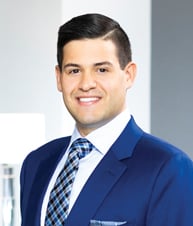A weekly summary of the precedential patent-related opinions issued by the Court of Appeals for the Federal Circuit and the opinions designated precedential or informative by the Patent Trial and Appeal Board.
Novartis Pharmaceuticals Corp. v. Accord Healthcare, Inc., et al., No. 2021-1070 (Fed. Cir. (D. Del.) Jan. 3, 2022). Opinion by O’Malley, joined by Linn. Dissenting opinion by Moore.
Novartis markets a 0.5 mg daily dose of fingolimod hydrochloride under the brand name Gilenya, a medication used to treat relapsing remitting multiple sclerosis (RRMS). Novartis owns a patent that claims methods for treating RRMS with fingolimod or a fingolimod salt, such as fingolimod hydrochloride, at a daily dosage of 0.5 mg without an immediately preceding loading dose. The patent claims priority to a 2006 British patent application.
HEC filed an Abbreviated New Drug Application (ANDA) seeking approval of a generic version of Gilenya. Novartis then sued, alleging that HEC’s ANDA infringes the patent. After a bench trial, the district court found infringement and found the patent claims not invalid for insufficient written description or anticipation. HEC appealed.
On appeal, HEC argued that the patent claims are invalid because the 2006 priority application lacks adequate written description of the 0.5 mg daily dose limitation and the “no-loading-dose” negative limitation required by the claims. The Federal Circuit disagreed and affirmed, ruling that the claims have adequate written description support in the priority application.
Regarding the dosage limitation, the Federal Circuit addressed HEC’s argument “that no one, including the inventors, knew that a 0.5 mg/day dose would be effective as of the priority date.” The court rejected that argument for two reasons. First, “efficacy is not a requirement of the claims,” as the claims “require only administration of a 0.5 mg/day dose for, inter alia, treatment purposes.” Second, an experiment described in the application provided evidence “that the inventors knew that a 60% lower dose would be effective.”
Regarding the no-loading-dose negative limitation, the Federal Circuit explained that “it is well established that there is no ‘new and heightened standard for negative claim limitations.’” The court rejected HEC’s argument that “silence alone cannot serve as a basis for” a negative limitation. The Federal Circuit explained that, “as with all other limitations, the negative limitation here must be accompanied by an original disclosure which conveys to a person of ordinarily skill that the inventor was in possession of the claimed invention.” The district court in this case had “correctly, and quite carefully,” analyzed the specification from the perspective of a person of ordinary skill in the art, and the Federal Circuit discerned “no clear error in the court’s analysis or conclusions.”
Judge Moore dissented as to the negative no-loading-dose limitation, explaining that “silence is not disclosure.” Judge Moore emphasized that the written description “is silent, eerily silent” as to a loading dose. In her view, “there needed to be some discussion of loading doses in order to show that the inventors in fact invented this treatment method that is not just ambivalent to, but expressly excludes, a loading dose. This is not a heightened written description requirement; it is simply a written description requirement.”

